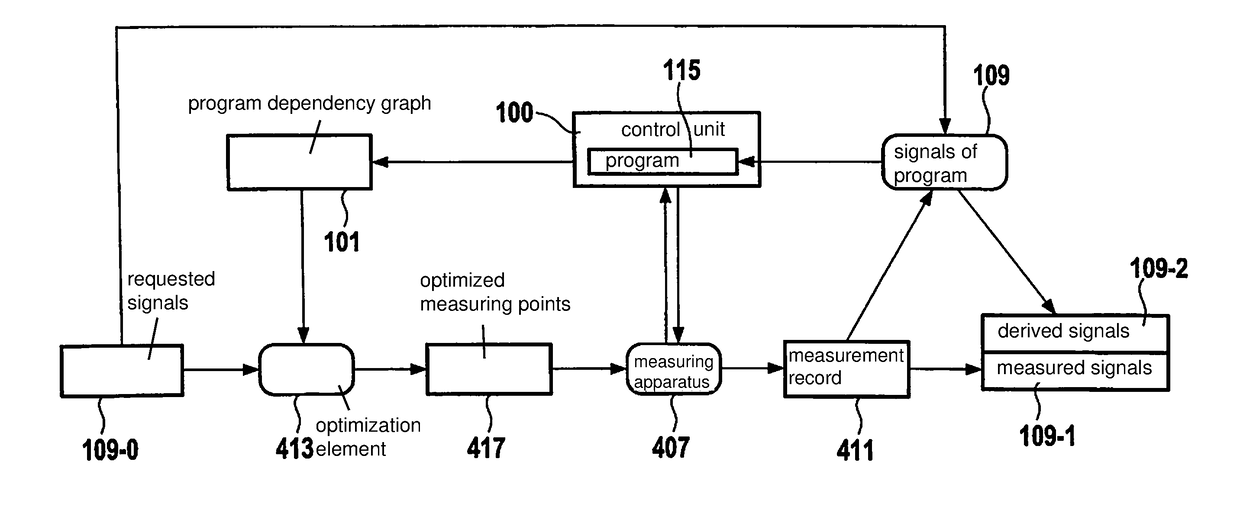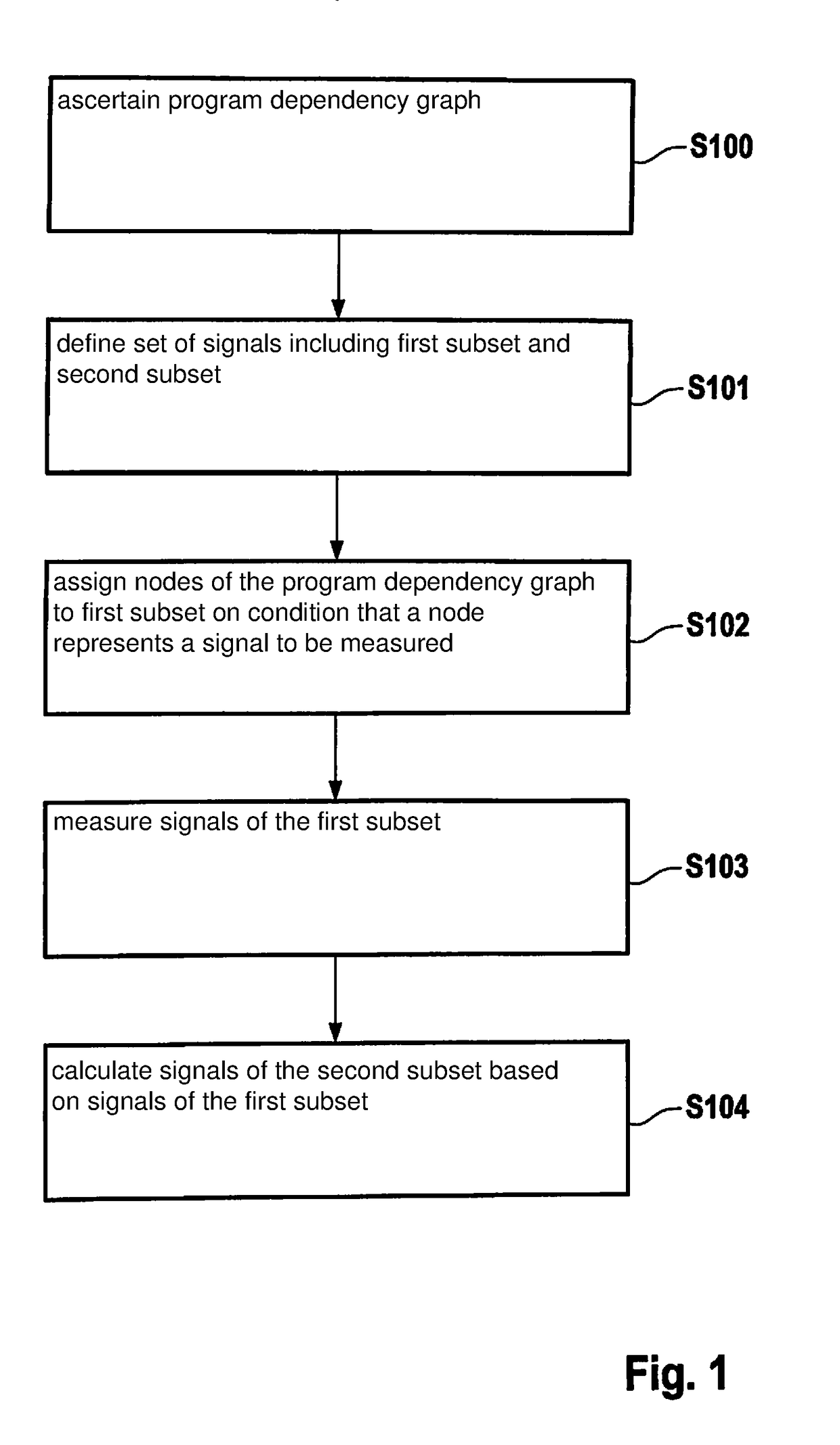Method for acquiring signals
a signal acquisition and signal technology, applied in the field of signal acquisition, can solve the problems of increasing the storage and communication requirements of the running time, increasing the volume of data to be transmitted, and not having the needed signals in the measurement file, so as to reduce the number of signals that are actually to be measured and reduce the data volume of the measurement
- Summary
- Abstract
- Description
- Claims
- Application Information
AI Technical Summary
Benefits of technology
Problems solved by technology
Method used
Image
Examples
Embodiment Construction
[0021]FIG. 1 shows a block diagram of an example method for acquiring signals of a control unit. The control unit is, for example, a control unit for engine control, which may potentially acquire a plurality of measured variables. A program of the control unit is used for evaluating and processing these measured variables further. In a plurality of computational steps, the program calculates one or more output signals from a plurality of input signals.
[0022]Consequently, each computational step generates, as an output, a further internal signal, which is processed further, using a further computational step.
[0023]In general, the control unit may be used for controlling any other device. The program of the control unit may be represented by a program dependency graph (program dependence graph). The determination of signals of the control unit, to be acquired, is carried out on the basis of this program dependency graph. The signals, which must be known for the calculation of a given ...
PUM
 Login to View More
Login to View More Abstract
Description
Claims
Application Information
 Login to View More
Login to View More - R&D
- Intellectual Property
- Life Sciences
- Materials
- Tech Scout
- Unparalleled Data Quality
- Higher Quality Content
- 60% Fewer Hallucinations
Browse by: Latest US Patents, China's latest patents, Technical Efficacy Thesaurus, Application Domain, Technology Topic, Popular Technical Reports.
© 2025 PatSnap. All rights reserved.Legal|Privacy policy|Modern Slavery Act Transparency Statement|Sitemap|About US| Contact US: help@patsnap.com



